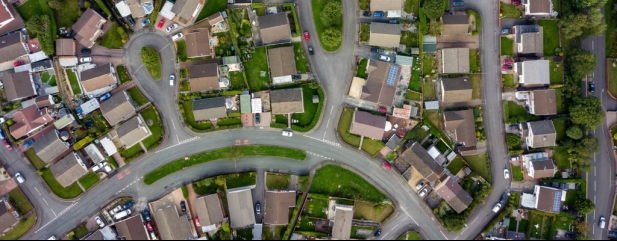Archived article
Please note that tax, investment, pension and ISA rules can change and the information and any views contained in this article may now be inaccurate.
Can property ever replace a pension?

The Bank of England’s outgoing chief economist, Andy Haldane, got into a bit of bother in 2016 by claiming he preferred investing in property to pensions. As many were quick to point out, it’s easy to be blasé about pensions if you’re a member of a gold-plated final salary scheme.
But clearly the property market has been a good place to have money invested, really since the financial crisis provided the last blow-out that showed house prices don’t always head in an upwards direction.
REMEMBER PROPERTY TAXES AND FEES
Clearly in a world where cash is paying next to nothing in interest, a buy to let property yielding 5% sounds extremely attractive, particularly when you stand to benefit from house price growth too. But the return might not look quite as good once fees and taxes are factored into the equation. When buying a property, there are legal fees, survey fees and stamp duty to consider. Buy to let investors now face a 3% stamp duty surcharge too, which makes the cost of buying a property even steeper.
As well as the fees associated with purchase, there are also ongoing costs associated with running the property, which will reduce the gross yield to something less eye-catching hitting your bank account. You’ll need to pay for maintenance of the property, landlord insurance and letting fees, usually in the region of 15% if you don’t intend to manage the tenancies yourself. You should also brace yourself for void periods when the house is vacant, as this will happen from time to time.
Then there’s the issue of tax. Depending on your tax bracket, you’ll pay tax of 20%, 40% or 45% on the income generated by the property. If you’re income is just over £100,000, you actually face marginal income tax rates of up to 60%, because your personal tax-free allowance is reduced by £1 for each £2 of income above £100,000, until it’s extinguished entirely.
TAX RELIEF LIMITED
You can claim some tax relief on the mortgage interest you pay, but this is now limited to 20%, rather than your marginal rate. If and when you sell the property, you will also face capital gains tax of 18% or 28% on any profits above the capital gains tax free allowance (currently £12,300), depending on whether you’re a basic rate or higher rate taxpayer.
On top of the costs, the tax you pay also serves to chip away at the returns that probably attracted you to the property purchase in the first place. That’s particularly when you consider that other assets like shares or funds can be held in an ISA to protect them from tax.
The great joy of investing in property however, is that you can largely fund it with someone else’s money. Borrowing from the bank via a buy to let mortgage can turbo charge your returns in good times, and boy, have times been good for the housing market of late. Of course, property prices can fall and leave you in the lurch, as anyone who found themselves in negative equity during the financial crisis will testify.
You also have to service the mortgage debt, which you can do with the yield you get from the property, after costs. At current interest rates, that probably looks pretty manageable, but if you take a variable rate mortgage, interest rates can rise on you at any time. Even if you fix, when your deal expires you still face the risk of remortgaging at significantly higher rates, which may leave you in the unenviable position of having to fund the mortgage out of your other income.
NEED FOR THOROUGH ANALYSIS
There are many reasons to believe the property market will continue to do well, though no-one should expect prices to rise every single year. But anyone considering a buy to let property as an investment should make sure they do a thorough analysis of all the costs and tax implications before parting with their money, to make sure the investment case actually stacks up.
As ever, it’s prudent not to have your eggs all in one basket either, so if you buy a rental property, it’s probably best alongside an investment portfolio to provide some diversification.
Important information:
These articles are provided by Shares magazine which is published by AJ Bell Media, a part of AJ Bell. Shares is not written by AJ Bell.
Shares is provided for your general information and use and is not a personal recommendation to invest. It is not intended to be relied upon by you in making or not making any investment decisions. The investments referred to in these articles will not be suitable for all investors. If in doubt please seek appropriate independent financial advice.
Investors acting on the information in these articles do so at their own risk and AJ Bell Media and its staff do not accept liability for losses suffered by investors as a result of their investment decisions.

 magazine
magazine








